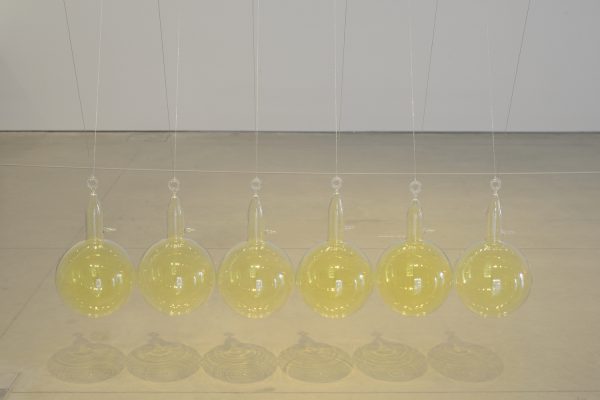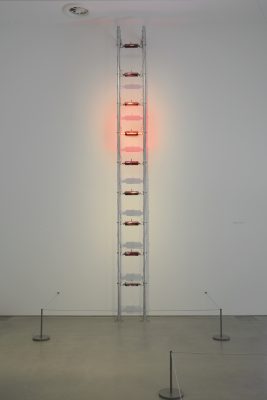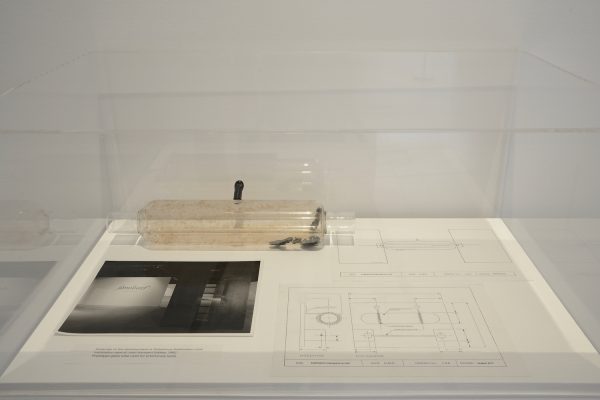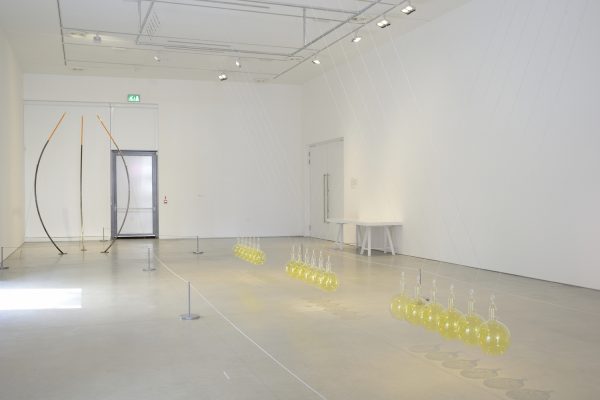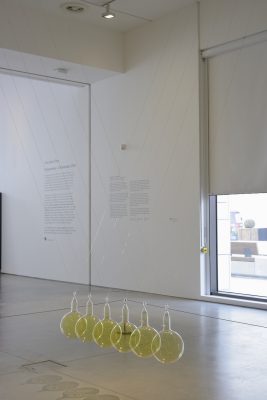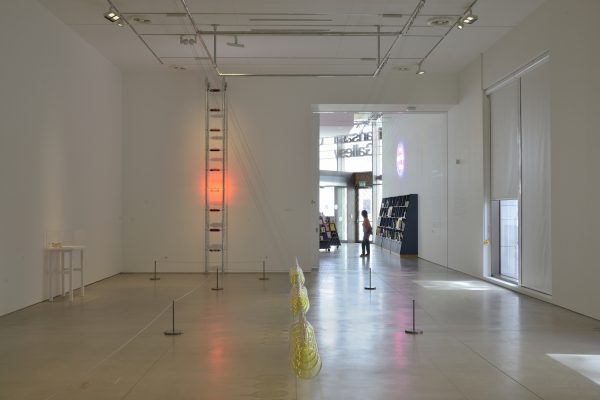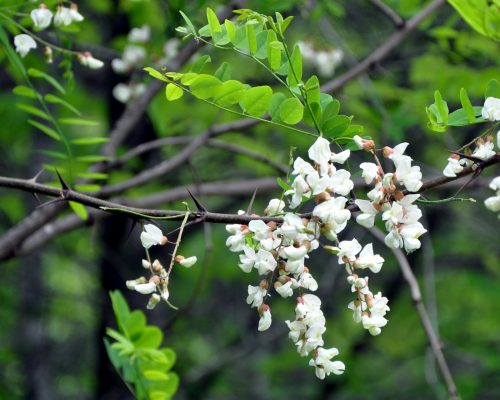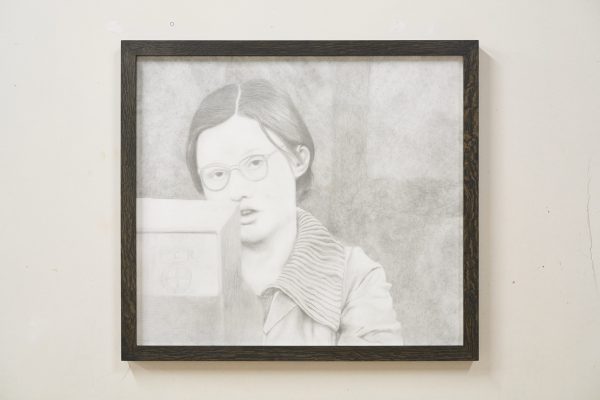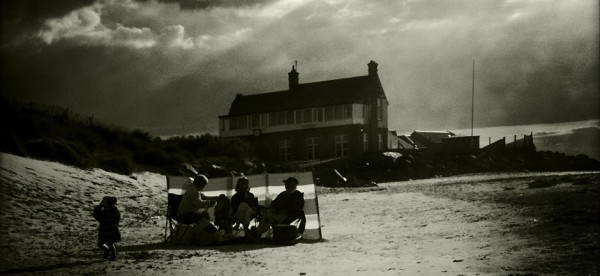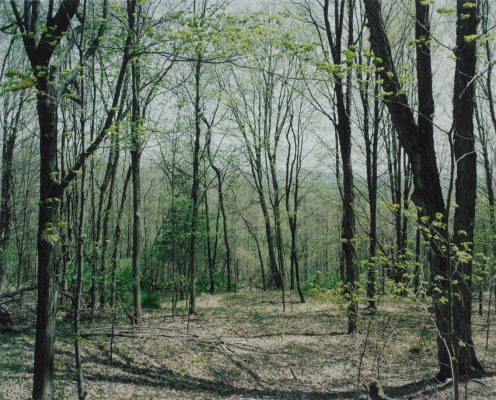In June 2018 a crowd assembled in Tate Britain to ask: ‘What does a queer museum look like?’ Surrounded by the airless eroticism of Pre-Raphaelite portraiture, all drowning Ophelias and hieratic Lady Macbeths, the founder of the Museum of Transology, E-J Scott, asked a mixture of queer activists and members of the public how to go about building a museum in which ‘we can save the queer past for the queer future’ and where ‘we all can become curators of queer heritage’. For some, a queer museum was necessary so the world could see that queers exist. For others, a separate queer museum would only absolve other institutions from diversifying their collections. One speaker questioned why black queerness should be defined by a museum, itself a European institution long bound up with the colonial subjugation of Africa and its diaspora. There was little threat of the discussion getting out of hand among the Tate’s polite, predominately white middle-class audience. But just in case, Scott had distributed oversized plastic toy tools among queer activists in the audience, to control the order of the discussion. One by one they were called in: hammer, screw-driver, spanner. Building a queer museum, it was suggested, was a matter of finding ‘the right tools for the job’.
A museum is an institution for relating things in time. It arranges objects not just in rooms, but in a history that moves in a continuous line from past to present, in order to show the development of a communal identity. In theory this can be the universal humanity disingenuously imagined by the British Museum or the Louvre; in practice it is often the more narrowly defined ethnic nation produced by Tate Britain, whose natural continuity and organic reproduction across time is enabled by the museum’s presentation of an archive of ‘our’ past. Perhaps one reason why the discussion at the Tate had to be handled so delicately, as if disagreement was something that only happened among children, was because of a suspicion that as a way of using time a museum is inherently contradictory with the idea of queerness, at least as it has so far been understood: queerness as that which is opposed to what is ‘natural’, that which accepts that genders and sexualities change across time and place, that which accepts the very idea that we have a ‘gender’ and ‘sexuality’ as historically novel, and really very strange, ways of understanding the self.
It may be that queer is simply what you make it, and that people might want a museum of queer art and history. And why not? No one should be begrudged the comfort of seeing themselves in the art of the past, so long as they recognise that it comes at the cost of fixing a particular way of using that past – as a resource for the definition of a communal identity in the present. The very real anger that accompanies debates about what belongs in a museum, queer or otherwise, shows that the conflict about who and what goes in a museum is a conflict about who and what we are. The fact that these debates seem so intractable is that co-opting the past to create any identity inevitably winds up in an endgame of definitions: my definition, your definition; my museum, your museum. But there are other ways of using the history, ways that don’t see it as something to be used: that see the past, for better or worse, as not really useful at all.
*
In 1992, Hamad Butt suspended nine sealed glass spheres containing chlorine gas from the centre of the roof of the John Hansard Gallery in Southampton. The spheres hung together in groups of three, like snapshots from the swing of a pendulum, creating the illusion of movement and a sense that the glass might shatter at any moment and release the toxic gas within. In one corner of the triangular gallery, three pointed glass tubes containing bromine gas were placed on top of metal poles that curved outwards and inwards as they ascended from the ground, the sharpened tips of a clenching claw. On the opposite gallery wall were installed ladders whose rungs were glass cylinders containing iodine in a vacuum and an infra-red heating unit. A timer turned the heating unit on and off so that the iodine transformed back and forth from gas to solid.
At room temperature, chlorine is an extremely reactive pale green gas. If inhaled, it combines with water to produce hydrochloric acid and release nitric oxides, so that the acid and oxides dissolve the lungs from within. Bromine appears at room temperature as a dark red liquid that evaporates into a gas of the same bloody colour. It does not produce an immediately visible reaction upon contact with human skin, and this delay makes it all the more dangerous. Inadvertently the entire body can be exposed to damage, the skin later erupting with blisters and ulcers. Iodine is a lustrous violet solid that when heated transforms directly from a solid to a gas: a process known as sublimation. Although contact with skin in its pure state can produce irritation, iodine plays a prominent role in human medicine as it is a powerful disinfectant – it cures by killing.
These three chemical sculptures — Cradle, Hypostasis, and Substance Sublimation Unit — made up an installation called Familiars, Butt’s first commissioned solo exhibition. Born in Lahore, Pakistan, in 1962, Butt grew up in Britain and studied chemistry and physics, later graduating with a degree in Fine Art from Goldsmiths in 1990. He entered Goldsmiths mythology by receiving one of the highest marks ever awarded for his final year project Transmission, an installation consisting of a vitrine containing maggots and sugar solution, surrounded by glass books emitting ultraviolet light, so that the birth, life, and death of the flies could only be viewed through filtered glasses. Stephen Foster, the director of the Hansard Gallery, commissioned Familiars after seeing Transmission at Butt’s graduation show. Like the tutors at Goldsmiths, Foster thought Butt was a ‘genius’, albeit a shy and quiet one, and that Transmission depicted a darkly ironic view of life and death: ‘People are attracted to things that destroy them.’ Both Transmission and Familiars confront us with the danger of our desire: we crave the sugar that kills us, we heal with chemicals that poison us. Both installations ask us, too, what we desire of art: what do we want to use it to do?
Transmission was later shown at Milch Gallery, which was founded in 1990, and which became a meeting point between London’s underground queer scene and the generation of artists then graduating from Goldsmiths who would later be marketed as the Young British Artists. Butt’s work was followed there by the strikingly similar installation which first brought Damien Hirst fame: In and Out of Love (1991), in which butterfly pupa attached to canvas hatched, lived, and died over the course of an exhibition. Ros Carter, a curator at the Hansard who helped install Familiars, recalls the ‘extremity of the gay scene’ centred around Milch. It was the height of the AIDS crisis, the style was ‘overt and aggressive, tied into the S&M subculture’. There was ‘a general culture of risk taking and doing things to your body’ that the art world shared not only with the queer underground, but also with the club scene which by the early 90s was flooded by drugs. ‘There were just a lot of chemicals going around,’ says Carter, ‘and a general air of toxicity.’ Carter, however, had the sense that Butt didn’t take part in the hedonism. He was ‘a gentle soul, measured, reserved’.
In the texts written whilst creating Familiars, Butt wrote of his desire to explore what he called ‘apprehensions’: the ‘seizure and arresting of perceptions’ which we ‘anticipate by fear to the point of understanding’. Apprehensions come after the biochemical processes corresponding to anxiety or stress. Fear and unease, Butt wrote, are ‘understood, made comfortable, apprehended by the language that takes hold of this quality of experience’. He wanted to convey the apprehensions caused by the spread of AIDS — ‘We cannot respond to this epidemic without fear and confusion, without aching to know why’ — but knew that for the artist to ‘legislate, so to speak, for the order of apprehending AIDS and the fear of AIDS… enjoins one to ironise the privileged role of the eye’. These apprehensions, at once so intangible and so consequential to those who acquire HIV, cannot be shown in a picture or described in writing. They are something more diffuse: a sense of poison in the air, of latent toxicity in the atmosphere, of fragile protection giving way.
A year after Butt died of AIDS-related illness in 1994, Familiars was exhibited at the Tate in the group exhibition Rites of Passage (1995). Foster, who Butt had asked to publish his writings posthumously, remembers how for years the Tate refused to acquire Familiars for its permanent collection when it was offered to them by Butt’s brother Jamal. Foster is certain that this wasn’t due to institutional homophobia; rather, it came from a worry about ‘how to preserve the toxic chemicals’. Museums preserve objects, not atmospheres; things, not terrors. Butt, he remembers, took the risk less seriously: he used to sleep with the glass vessels under his bed. After he died, Jamal stored them in the attic of his house in North Finchley. Eventually, after years of campaigning by Jamal Butt, Diego Ferrari, Jean Fisher and others, the Tate acquired Familiars for its permanent collection in 2015, although it has never been publicly exhibited.
In September 2018 the same samples of chlorine, iodine, and bromine that Butt sealed in glass in 1992 were taken out of storage and Familiars re-installed in the Hansard’s new building in Southampton. Foster, who recently retired as the gallery’s director, is curating an exhibition called Time After Time that recreates a number of installations he has commissioned over the past thirty years, with Familiars appearing alongside work by John Latham, Caroline Bergvall, Charlotte Posenenske, Walter van Rijn and Victor Burgin. The aim of the exhibition is to explore the curatorial issues involved in translating sculptural installations across time and place. Or as Carter, now Senior Curator at the Hansard, puts it: ‘Some things are made to be ephemeral, and you have to be careful not to re-stage things for the sake of it. If something is tied to a particular moment there is a reason for that, and you have to be careful not to be self-indulgent, or to do it out of nostalgia.’ Just as there is a tension between desire and danger at the heart of Butt’s work, so too there is a tension in every act of curatorial reconstruction between the urge to do justice to a forgotten work and a cheap nostalgia that would betray it.
Hamad Butt might seem to be precisely the kind of artist, long neglected by official art installations, whose work is now ripe to be recuperated within a queer art historical museum. As his story shows, of course, such artists are never actually forgotten. They have always been remembered by curators, critics and other artists who have worked to achieve the mundane but consequential steps that, over time, lead to an artist’s work enduring: publications, catalogues, purchases by national collections. Yet any attempt to use his work to build a narrative of queer art history – to use it to create an identity – is complicated by that work’s own attitude to its use. The desire to use the past in a museum cannot overlook the fact that works from the past might take a rather ironic view of being used in the future.
Familiars doesn’t just play with the expectation that art made by a queer person with HIV should be useful – a document of suffering recorded for the future. It also exaggerates its own use of these chemicals as a device to convey the atmosphere of fear surrounding AIDS in the early 90s. The pendulums only offer the illusion of movement, the glass claw only appears to clench. Foster remembers that Butt loved the fact that the Hansard provided gas masks and asbestos suits alongside the installation, even though they probably weren’t necessary. Butt’s writings show a deeper play with the idea that Familiars was being used to convey the fear of AIDS. He notes that Susan Sontag’s analysis of 1950s sci-fi movies showed that visions of apocalyptic destruction caused by fear of infection actually involve ‘imaginative complicity with disaster’: ‘The trauma of the body to which fantasy inures us, is the opposition to collective nightmares that inspire a sense of humour.’ To believe that a threat can damage you to the point of trauma is what gives that threat its power, and it is what forecloses other forms of resistance. Butt asked that the book containing these notes be accompanied by a hologram of the Bollywood actress Meena Kumari dancing in a scene from the film Pakeezah (1972). Kumari is one of the great camp icons of Bollywood, and in Pakeezah she plays the role which distills the reason so many Indian gay men identified with her: a courtesan who hides her endless self-sacrifice in love behind a mask of decorum, and who can only acknowledge her suffering by transforming it into an exaggerated melodrama of song and dance. Ever so subtly, Butt’s writings camp the idea of art being used to convey the trauma of AIDS. Familiars takes unseriously the belief that art should be used to provide a historical document of queer suffering or identity, and sends a message to its future viewers asking why we might want it to do so.
*
If we don’t yet know what a queer museum looks like, museums and galleries around the world are constantly seeking and discovering the art which would go inside it. In 2017 MOCA Los Angeles presented Axis Mundo: Queer Networks in Chicano L.A., the first major retrospective of queer Chicanx artists, stretching back to videos of the 1970s guerilla drag performances of Edmundo ‘Mundo’ Meza and Robert ‘Cyclona’ Legoretta. That same year the Museum of Contemporary Art Taipei became the first major institution in Asia to host an exhibition of LGBTQ Asian art, with its show Spectrosynthesis. Although its focus was mostly on contemporary work, the exhibition reached back to include Shiy De-Jinn’s 1960s portraits of androgynous youths and Tseng Kwong Chi’s East Meets West series of self-portraits (1979–89), anchoring the work of present artists within a narrative of queer Asian art history. Peter Hujar, whose composed monochrome portraits of Susan Sontag, Candy Darling, and Robert Mapplethorpe have shaped a romanticised image of downtown New York in the era before AIDS, has been the subject of recent retrospectives in Spain, the Netherlands and New York. Hujar’s Orgasmic Man (1969), a photograph of a man’s face twisted in the pleasurable agony of orgasm, provided the cover of Hanya Yanagihara’s bestselling A Little Life (2015), positioning the novel’s melodramatic saga of queer suffering, as if to validate it, in a distinctively queer history of intertwined pleasure and pain.
Even a show focused on contemporary art’s preoccupation with gender and sexuality, 2017’s Trigger: Gender as a Tool and a Weapon at the New Museum, New York, saw artists like Josh Faught, Ellen Lesperance, and Candice Lin pre-occupied with archives of the queer past. Reina Gossett and Sasha Wortzel’s Lost in the Music (2017) included Gossett’s now rare footage of the black trans activist Marsha P. Johnson; the question of who owns this footage is at the centre of a bitter battle between Gossett and the producers of the Netflix documentary The Death and Life and Marsha P. Johnson. Archives of queer history have been valuable commodities. Valuable, and value-adding: the first exhibition shown at Peckham Levels, a redevelopment ‘bringing new life’ (think Poké bowls, rented workspaces, Instagrammable interiors) to one of London’s major historically black communities, was Southwark QueerStory (2018), a celebration of the borough’s queer history, promoted with a photograph from the 1980s of a kissing black and white lesbian couple. This area of London has less positive histories of race relations, such as those told by the poet Jay Bernard in their recent poem-sequence Surge: the 1981 New Cross fire in which thirteen black people died, and which prompted mass demonstrations against the failure of the predominately white police to investigate the disaster. But evidently, these don’t go as well with ‘redevelopment’ as images which instrumentalise queer love as the solution to racial domination.
The desire for a queer archive has even seeped into the practice of living queer artists. In an interview about her photographic portraits of black lesbians living in South Africa, Zanele Muholi has explained that ‘I have created an archive that never existed in this country before.’ For Muholi, if an archive of black lesbian life doesn’t exist, it has to be invented: an identity can’t be imagined without the contents of a museum. Karol Radziszewski, founder of the first Polish queer art magazine, DIK Fagazine, created the virtual Queer Archive Institute to host his collection of interviews, oral histories, and magazines documenting queer life in Eastern Europe during the Communist era. Radziszewski wanted to preserve this material so it can be used for future artistic projects: ‘everything that contemporary queer artists are doing is becoming a queer archive’.
For other artists, a queer archive is important only insofar as it can be used to imagine a different future. Paul Maheke’s A fire for a public circle (2018), shown at Chisenhale Gallery in London, presented a daily performance whose background was a mural depicting a comic-book vision of outer space, a childish cosmology of distant galaxies. Each afternoon Titilayo Adebayo and Heather Agyepong enacted a performance which re-staged movements from performances by Bruce Nauman, Felix Gonzalez-Torres, Eisa Jocson and Michael Jackson, whilst reciting texts by Audre Lorde and Judith Butler, among others. Maheke wanted these performances to rearticulate pre-existing material, ‘to re-work it for the present moment’: a process of ‘queerness and blackness as modes of production’. Gestures were summoned from the past to create a ‘space for reinvention’ in order to ‘think through identity outside of “identity politics”’. The particular archive summoned in each performance existed only to create something new in the moment, disappearing without being fixed into a purportedly authoritative canon.
For the Istanbul Queer Art Collective, founded by Onur Gökhan Gökçek, Seda Ergül and Tuna Erdem, performance and restaging are also central to queerness as a mode of production. Since 2012 they have enacted ‘Fluxus’ performances in Turkey and elsewhere: performing the instructions left in the so-called ‘event scores’ composed by artists like John Cage and Yoko Ono. They do so in order to inhabit the perception, common in Turkey, that both contemporary art and queerness are Western imports. Erdem and Ergul explain that ‘being a lesbian is often referred to as something we have “copied” from the West’. They want these restagings and the copying they enact to fail; not to ‘fail better’, like Beckett, as so to make use of failure – ‘we just want to fail’. For Erdem and Ergul, queerness is an attitude to time: they want the failure of their restagings to produce ‘transtemporal drag’, to show what does not or should not translate across time. Their performances show the artifice of an assumed continuity between past and present, and between the West and its others, just as the point of drag is to show the artifice of natural masculinity and femininity, and to enjoy making it useless.
The discussion at Tate Britain imagining what a queer museum might look like was organised in the aftermath of Queer British Art 1861–1967 (2017), an exhibition which offered the closest Britain has had to an official seal of approval for an archive of queer art history. Its wide historical range forced its curator, Clare Barlow, to confront an issue other exhibitions of queer art, more focused on the recent past, could evade. The exhibition presented work from times when, as Barlow wrote, ‘the modern terminology of “lesbian”, “gay”, “bisexual” and “trans” were unrecognised’. Neither was ‘queer’, but this was absolved of responsibility to historical accuracy. ‘Queer’ named past sexual identities ‘that don’t map onto modern sexual identities’: Victorian and Edwardian artists understood themselves as ‘Uranian’, ‘inverts’, or members of a ‘third sex’, but certainly not queer. And yet, ‘queer’ also named what these artists have in common with the contemporary notion of ‘queer’ as an oppositional sexual identity. The paradox of queerness naming something historically specific to the present as well as something continuous across time was shirked in the physical curation of the show, which moved in linear fashion, room by room, from the desires of the Victorian era to the explicit sadism of Francis Bacon in the 1960s. But this contradiction is not something that a different hanging could solve, or even that any museum could solve: it is a paradox latent in the very concept of queer itself.
*
The freedom of queerness hits like a revelation: it doesn’t have to be this way because it hasn’t always been this way. Sex, desire, my gender, my body: these were different in the past and therefore can be different in the present. Few things are more convincing when trying to prove there is nothing natural about dividing the human species into a hierarchy based on what they desire than being able to point, as Michel Foucault famously did in The History of Sexuality (1978), to the moment in history when homosexuality and heterosexuality were invented. The same move – using knowledge of the past to expose the myths of the present – frees you from believing that you are always only a man or a woman, that there are only things called men and women, that you will only ever desire one person, that desire is that important at all.
This leaves today’s queers with a strange relationship to the past. The freedom of queerness is the realisation that the self and its desires are cultural, not natural: they change, and they have never been fixed. This means the queer can only know history in order to do without it, at least in any deep and extended sense. If selves and sexualities can be invented, then before a certain point they didn’t exist. Queerness is perhaps the most modern identity of them all, accepting of the most intimate aspects of our lives that all that is solid melts into air, all that is holy is profaned. Queers are cut off from the past by the revelation that sets them free. Queers need to do without history in order to be queer.
Queerness, too, was invented, which is to say that activists, academics and artists have participated in a collective decision to make ‘queer’ a term of communal identification and recognition. The paradox of queerness’s relationship to history was acknowledged at its moment of invention. In the early 1990s Judith Butler wrote that there was a tension at the heart of queer as the name for an identity, due to its being reappropriated from a shaming insult to a badge of pride. If, Butler wrote:
the term “queer” is to be a site of collective contestation, the point of departure for a set of historical reflections and futural imaginings, it will have to remain that which is, in the present, never fully owned… This also means that it will doubtless have to be yielded in favour of terms that do that political work more effectively.
For Butler, at least in 1993, the potential of queer as a political concept lay not simply in the refusal to ascribe it a fixed definition – something true in a banal way of any identity – but in the willingness to eventually abolish itself in favour of other, ultimately more liberating ways of imagining selves and communities. If we remember that something is invented, we can imagine it ceasing to exist. The explosion of queer art and theory since the 1990s was animated, maybe even defined, by the tension between queerness as a means of looking back, and as a way to imagine the future. As queerness has expanded beyond labelling a sexual preference to naming lives and communities that are not governed by the progress from childhood to child-bearing, or by the dictates and bonds of biological reproduction, queerness has come, for many, to be nothing so much as a way of living time.
What kind of time is produced by an archive, a heritage, a museum? Part of Butler’s hesitation about embracing queerness as a political identity came from the knowledge that, in the United States at least, earlier sexual identities like ‘gay’ and ‘lesbian’ gained political rights and cultural recognition only insofar as they modelled themselves on the ethnic identities of the Civil Rights era: blackness, Asian-American, Chicanx. Queer held out the promise of a different form of identity than ‘gay’ or ‘lesbian’: one which wouldn’t be modelled on an ethnicity and would only use the past to imagine a different future – one in which queerness might cease to exist. Ethnic identities deserve civil and political rights because, or so the story goes, they name distinct cultures and ways of life and the preservation of cultures is a good in itself. Nothing shows the distinction of a culture – and thus its worth – more than the fact that it has existed over time, and that there is a constantly renewing continuity between past and present. In an ethnicity, culture transforms back into nature, as the eighteenth-century German philosopher Johann Gottfried Herder – one founder of the concept of ethnicity – imagined: ‘the earth might be regarded as a garden, where here the one and there the other human national plant flowered in keeping with its own formation and nature’. National museums and archives are built to show the continuity of the natural species across history, which persists in a time modelled on biological reproduction. The first modern museums were museums of natural history; the art museums of today make each work of art the product of a natural species, bonded across time by the biological reproduction that queerness tries to escape.
It might be that the desire for a queer museum is just one moment in an oscillation between the idea of queerness being used to reflect upon the past and to imagine the future. But it also might be true that, at least in the art world, the temporal tension at the heart of queerness has finally dissipated: it is no longer willing to admit the artifice of queer as a sexual identity to the point of imagining its disappearance. Maybe enough artists, curators, museums and viewers have decided that queers need the same kind of heritage as every other ethnic group in a liberal capitalist democracy. Maybe they have realised that liberal capitalist democracies find it easier to grant rights to cultures than to redistribute wealth to classes. Maybe the thrill of knowing your identity is made-up has come to feel hollow when faced with the comforts of imagining your reflection in the past.
There is nothing inherently revolutionary about novelty. The proclamation of being without precedent sounds a lot like the slogan of a new product for the market. History can tell us some important truths. People suffered in the past for desires, touches, and glances that today seem so casual you forget how much they mean. People suffer today for the same reasons, and there is something obscene about the fact that millions are dying of AIDS in Africa and Asia whilst posters appear in London and New York instructing you in the joys of being untransmissable with the help of one pill a day. But if the past is only being used to tell others who you are, it’s unclear whether it is really being remembered at all.
In 1952 Jean Genet wrote to Jean-Paul Sartre: ‘In any event the significance of homosexuality is this: A refusal to continue the world. Then, to alter sexuality. The child or the adolescent who refuses the world and turns towards his own sex, knowing himself that he is a man, in struggling against this useless manliness is going to try to dissolve it.’
For Genet, homosexuality doesn’t have to only replace a natural order with its cultural reality: it can also just make the natural useless, and enjoy doing so too. Its emblems were the flowers he imagined that bloomed from being spat upon, that wreathed his drag queen Divine: artificial flowers, not the living roses of nature. The idea that a sexuality is not a definition you identify with, but a way of taking pleasure in being useless, is neither specific to Genet nor to the identity of a ‘homosexual’. It is what drives the spectacle drag kings make of the masculinity normally used to subjugate women; it is what enables the pleasure of camp, which delights in what is outdated; it is what marks any person whose desires aren’t tied to reproduction: from the point of view of evolution they are simply useless. Queerness as a practice, rather than identity, can be a way of being useless, of enjoying making things useless, of not needing to use. It can be a way of doing without the things you find yourself born into, since for all that queers might want to refuse to continue the world through reproduction, none of us can escape being born.
*
The attraction of a museum is that it holds an archive of the past, ensuring that what could be forgotten will be remembered. But it also turns the past into a resource to be mined – with the right tools for the job – to create an identity in the present. To do this requires a particular model of time, in which the present is organically reproduced from the past, like seeds from a flower. In 2018 it was announced that London will get its own queer museum, and in time other cities around the world will too, producing an international archive of what it means to be queer. Just as the museum spread from Europe to the rest of the world, so too a certain archive of queerness will probably spread to Taipei, Mexico, and Johannesburg: drag, vogueing, and dykes, but not hijra, mashoga, or two-spirit. Different ways of using the past will continue to exist, ways that make useless notions of continuity modelled on nature; they might continue to be recognised as queer, or they might lead to other political practices and collectivities.
A museum of queer art would ensure that the past will not be forgotten, but we should never assume it is the only way of using time. Nor should we ever assume that it makes the past familiar. We call things familiar when we think we know them well, as if they are members of our family. The word assumes that we are most at home with the people who made us, that we are most comfortable with what is natural, with what we know how to use. Familiars are also the animals that assist practitioners of magic. They appear only to enable the essence of magical thinking: that pretending makes it true. We shouldn’t forget, as Butt wrote of his Familiars, that one thing art can do is make the past disappear: ‘There is the acknowledgement of loss and the numbness of its repetition, which moves us in particular to displace fear with some kind of charming dialogue; an ungraspable sleight of hand.’
